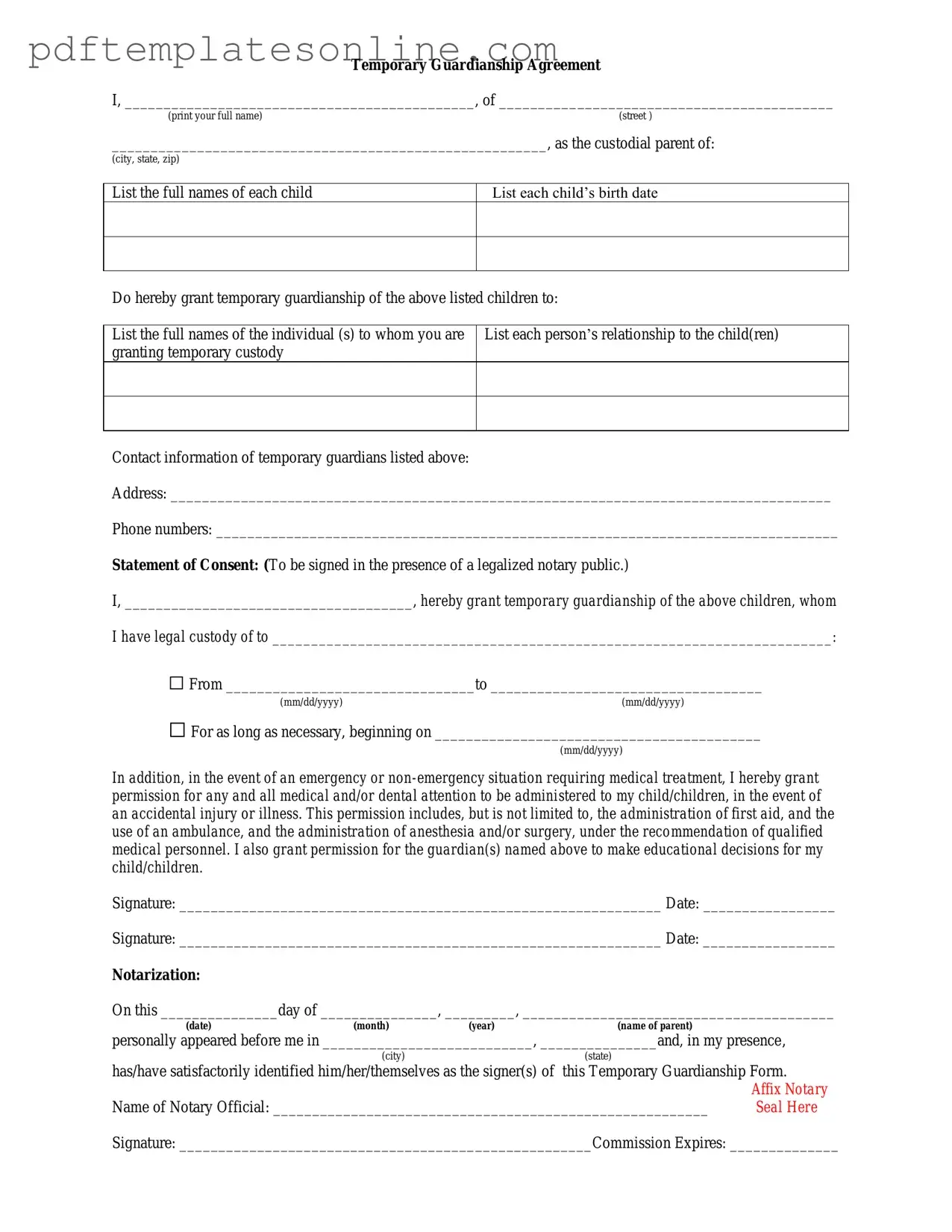When filling out the Temporary Custody form, individuals often encounter various pitfalls that can lead to complications in their custody arrangements. Understanding these common mistakes can help ensure that the process goes more smoothly. One prevalent error is failing to provide complete information about the child. It is essential to include the child's full name, date of birth, and any relevant identifying information. Omitting these details can lead to delays in processing the application.
Another frequent mistake is not clearly stating the reasons for seeking temporary custody. The form requires a description of why the current custody arrangement is not suitable. If this section is vague or lacks sufficient detail, the court may question the necessity of the request. Providing specific examples and circumstances can strengthen the case.
People often overlook the importance of including all relevant parties in the application. This means listing both parents and any other individuals who may have a legal interest in the child's welfare. Failing to do so can result in the court not having a complete understanding of the family dynamics involved, which is crucial for making informed decisions.
Another common error is neglecting to sign and date the form. A signature indicates that the information provided is accurate and that the applicant is committed to the request. Without a signature, the application may be considered incomplete and could be rejected outright.
Additionally, individuals sometimes forget to attach necessary supporting documents. These may include proof of residence, financial statements, or any other documentation that supports the request for temporary custody. The absence of these documents can weaken the application and lead to further inquiries from the court.
Some applicants fail to keep copies of the submitted form and any accompanying documents. Having a personal record is essential for tracking the progress of the case and for reference in future hearings. Losing this information can create confusion and hinder communication with the court.
Another mistake involves not being aware of the specific filing requirements in their jurisdiction. Different states may have different rules regarding how to submit the form, what fees are associated, and what additional information may be required. It is crucial to research these details to avoid unnecessary complications.
People sometimes underestimate the importance of being truthful and transparent in their responses. Providing false information or omitting critical facts can lead to serious consequences, including potential legal penalties. Honesty is always the best policy, especially in custody matters where the child's best interests are at stake.
Moreover, some individuals may rush through the form without taking the time to review their answers. A thorough review can help catch errors or inconsistencies that might otherwise go unnoticed. Taking a moment to reflect on the information provided can make a significant difference.
Finally, applicants often neglect to seek legal advice when necessary. While it is possible to fill out the Temporary Custody form without an attorney, consulting with a legal professional can provide valuable insights and guidance. An attorney can help navigate the complexities of custody law and ensure that the application is as strong as possible.
